For decades, Burning Man has represented an escape from the current reality. An event for free-er spirits to rethink new age ideals inside a stateless entity where art, music and partying reign supreme on the desert plains.
Over the years, the Bay Area-founded event has dealt with an internal clash as the gathering has grown larger and attracted a heavy presence from Silicon Valley’s wealthy tech class, with tales of turnkey experiences, air-conditioned camps, helicopters and lobster dinners. Now, under the shadow of a historic pandemic, the organization behind the massive, iconic event is desperately working to stick to its roots while avoiding financial ruin as it pivots the 2020 festival to a digital format with the pro bono help of some of its tech industry attendees.
With just a few weeks before the event is set to kick off, the organization is bringing together a group of technologists with backgrounds in virtual reality, blockchain, hypnotism and immersive theatre to create a web of hacked-together social products that they hope will capture the atmosphere of Burning Man.
Going virtual is an unprecedented move for an event that’s mere existence already seems to defy precedent.
Burning Man is held in late August every year inside Nevada’s Black Rock Desert. For nine days, the attendees, who refer to themselves as Burners, fill up the desolate landscape with massive art installations, stages and camps. Attendance has been climbing over the past several decades, to the point that the federal government got involved, creating a more than 170-page report arguing why the event’s attendance should be capped. More than 78,000 people attended in 2019.
It’s an escape from society in a shared social experience that doesn’t seem to be replicable elsewhere.
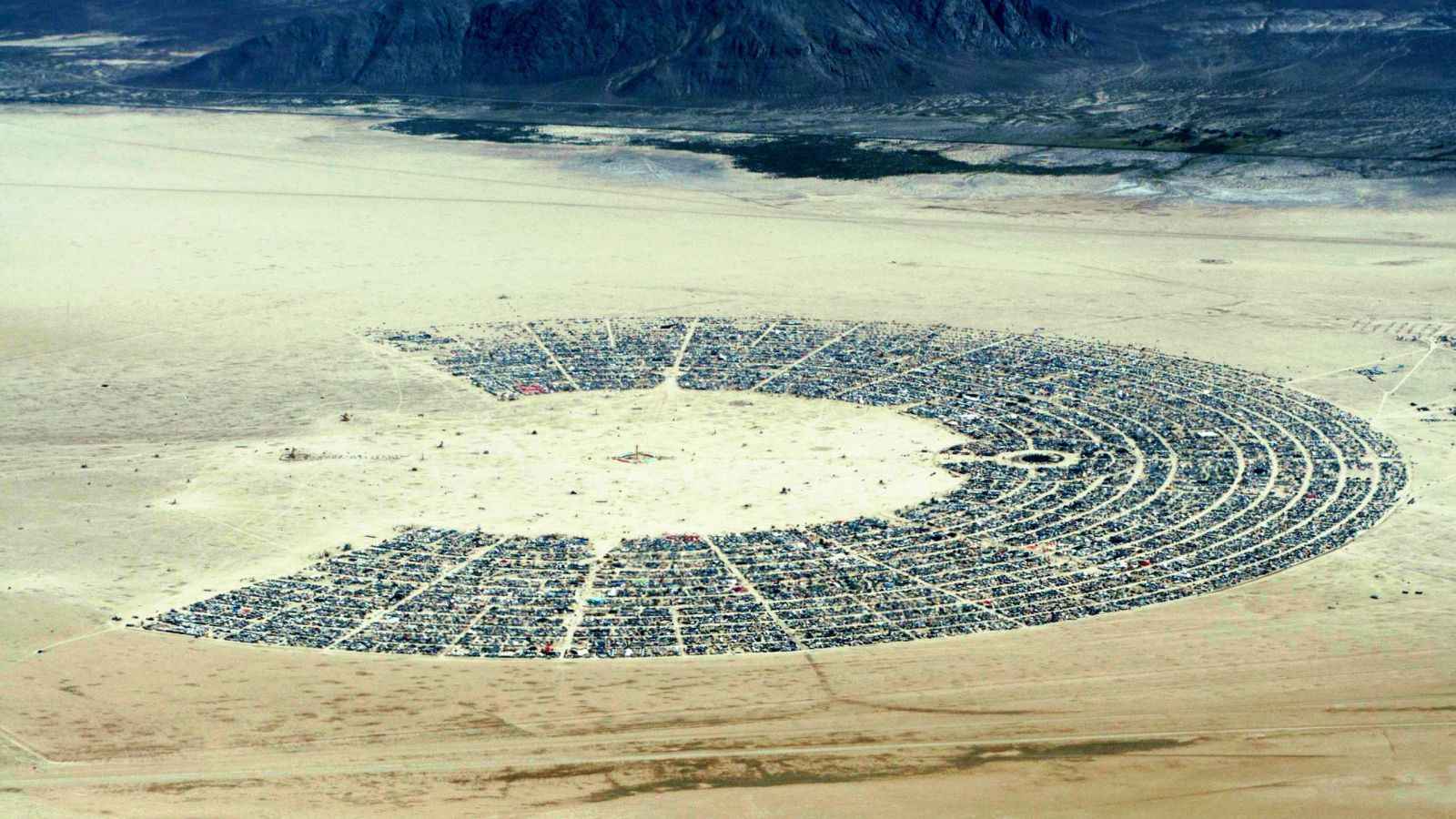
The Multiverse
Steven Blumenfeld became the CTO of Burning Man days before the org’s leaders publicly announced that, due to the COVID-19 pandemic, the physical event was being abruptly canceled and the team was going all-in on a virtual gathering. Though the serial CTO expected the position to largely involve crusty tasks maintaining the event’s media infrastructure, he soon was pressed to rethink the front-end of a sprawling event that’s decades old and steeped in lore.
“My first inclination is, ‘Great! Let’s go build a big 3D VR world blah blah blah… So then I spent the first two weeks looking at what I had for staff, what I had for time frame, and what we could actually do,” Blumenfeld says. “There was just no way. And you know, I actually still wanted to do it. I wanted a challenge… but the reality was it just wasn’t going to happen.”
Burning Man is a massive undertaking, with a particularly deep emotional hold inside San Francisco, where it was first held in 1986, and by extension Silicon Valley. It isn’t all that surprising that when the Burning Man Project announced the event was making the move to a digital format, there was a rapid influx of community input to help decipher what an on-the-grid virtual Burning Man might look like.
“We had 14,000 people tell us they wanted to contribute in some way to a virtual Black Rock City,” said Kim Cook, the org’s director of art and civic engagement. “Some of them said what they wanted to contribute was love; so that’s cool. We also had around a thousand of them say they wanted to do developer-type work.”
Some of the groups that reached out to the Burning Man Project were companies that were willing to build a Burning Man experience but wanted official branding present. Despite a precarious financial position, Burning Man’s organizers declined help from these sponsors, citing the org’s adherence to “de-commodification” — a desire to prevent corporate infiltration of the event, eschewing advertising, branded stages and corporate partnerships.
Turning away from the professional studios, Blumenfeld and others settled on a network of small indie teams filled with Burners that were willing to develop the official digital experiences for the event on their own time.
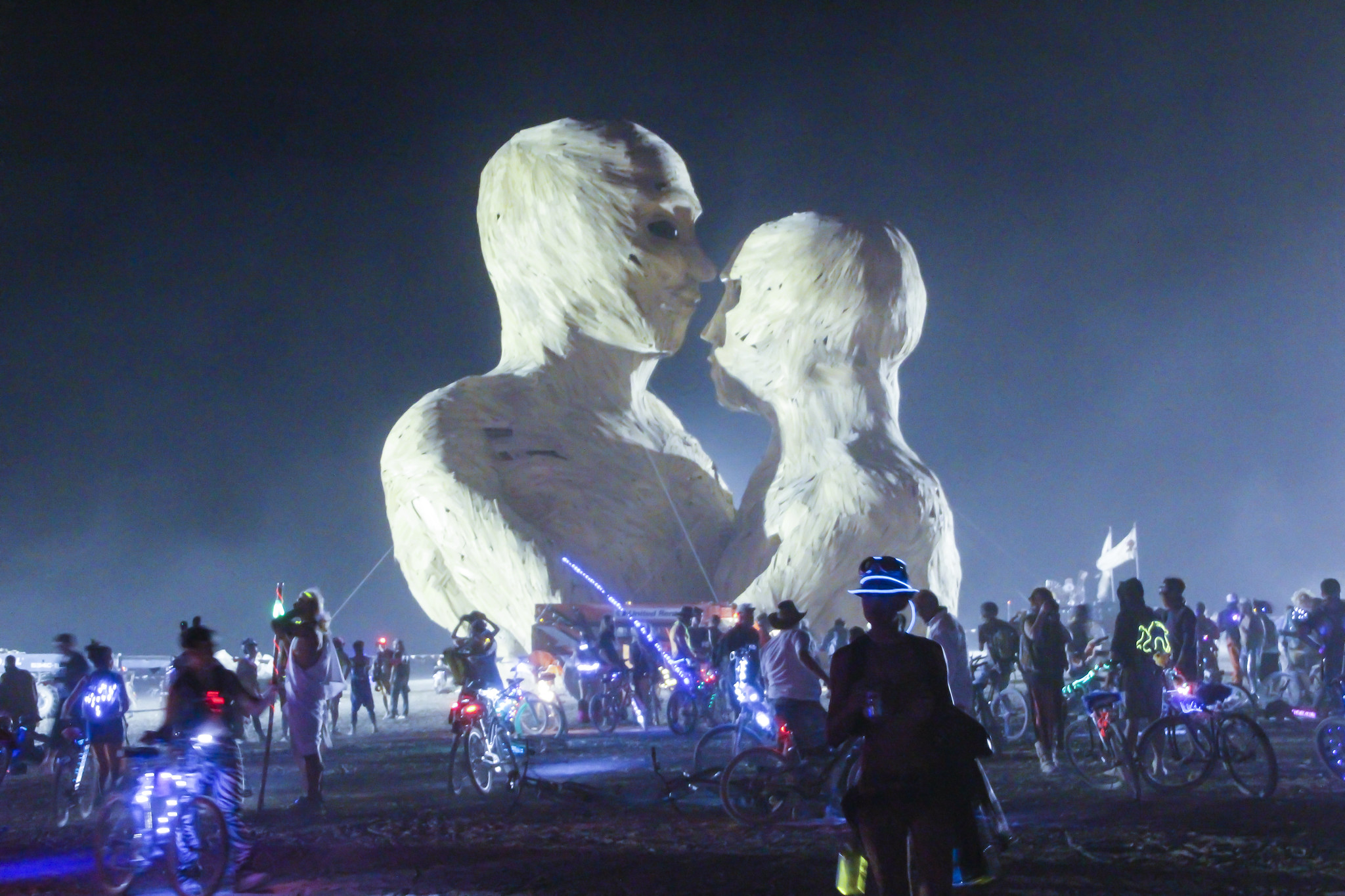
A new moment for social networking
Eight projects eventually emerged as official “recognized universes,” each taking drastically different approaches to what a virtual Burning Man should look like. While some focus their efforts on virtual reality, others add social layers to video chat or build 3D environments on top of existing platforms like Second Life or Microsoft’s AltspaceVR.
During the pandemic, revamped developer conferences and trade shows have been able to port keynote addresses or panels to a Zoom format fairly seamlessly, but there are plenty of elements of the Burning Man experience that the teams involved realize might be impossible to replicate with online platforms. The developers creating the event’s virtual worlds are determined to rethink the conventions of online social networking to ensure that Burners make new friends this year.
“The sense of awe and scale is tricky,” says Ed Cooke, who is building one of the official apps. “One way of explaining Burning Man is that it’s a state of mind that you access as a side effect of all the things that happen on the way there.”
Cooke, a London startup founder who also boasts the title of Grand Memory Master, earned for — among other things — memorizing the order of 10 decks of cards in less than an hour, has been building SparkleVerse with his friend Chris Adams, whose daytime gig is as a senior software manager at Airbnb.
Their web app, which pairs a 2D map interface with video chat windows, is primarily focused on advancing how shared context can facilitate and better frame social relationships.
Amid quarantine, the pair tells TechCrunch they have been creating deeply complicated video chat parties for their friends. One example is a moon-themed party where they created a clickable map of the lunar surface that guided the 200 attendees through 16 separate virtual spaces with their own themes. Before the party kicked off, the hosts walked people through the “experience of traveling to the moon” by guiding them through the effects of zero gravity and instructing them to play along with experiencing it. Another hot tub-themed party invited guests to jump into their bath tub before firing up Zoom.
Cooke and Adams are leaning on some of these mechanics to create a Burning Man theme, hoping that taking cues from immersive theatre will enable people to commit more deeply to the experience. The acts of driving, losing your phone connection and growing tired and hungry on the way to the physical event add to a “spaciousness in your consciousness” that allows people to act more freely, Cooke says. He wants participants to replicate these experiences by taking steps outside their normal life in the run-up to the event, whether that’s sitting through an obscenely long video chat session to simulate a drive to the desert or setting up a tent in their living room, or cutting off their water line and avoiding showers during the nine days.
“All of this is embedding you further and further into this distant context, miles away from your normal life, where effectively in the course of this, you’re just becoming a radically less boring person,” Cooke explains in a nine-minute video outlining the platform.
Many of the apps are building on the idea of how spatial interfaces can feed greater social context and make it easier to approach people and make new friends.
Another official app, Build-a-Burn, takes the idea of a stylized 2D interface for video chat even further with a sketched-out grayscale map of Black Rock City that users can navigate little stick figures across. As a user moves through different camps and their avatars get physically close to each other, new video chat screens fade in and users can gain the experience of venturing into a new social bubble.
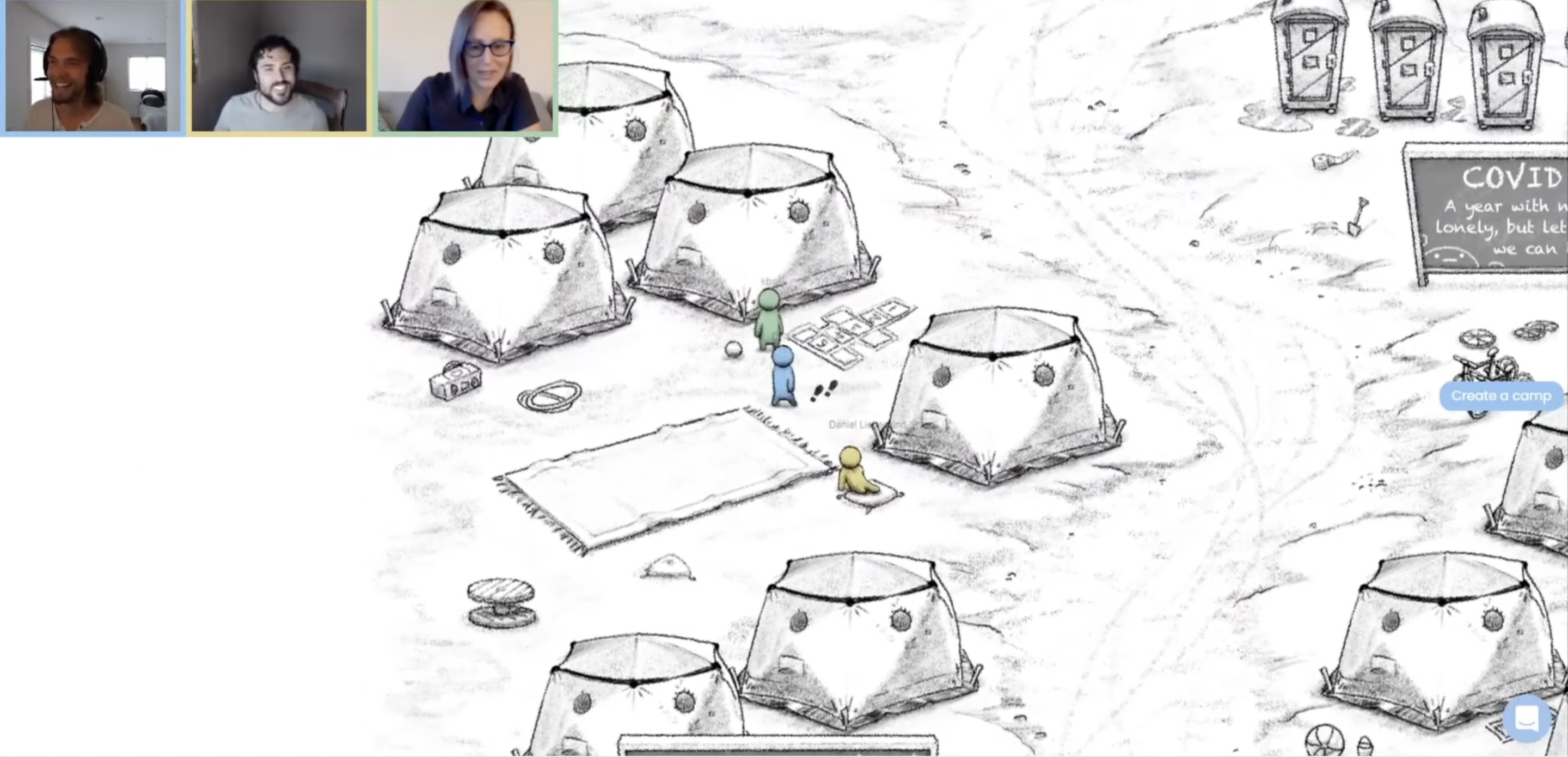
While Build-a-Burn and SparkleVerse are leaning more heavily on video chat, other experiences hope that creating massive 3D landscapes that match the scale of the real-world event will help people get into the spirit of the event.
Other than Burn2, which is wholly contained within the Second Life platform, most of the 3D-centric apps integrate some level of virtual reality support. Projects that support VR headsets include The Infinite Playa, The Bridge Experience, MysticVerse, BRCvr (which taps into Microsoft’s AltspaceVR platform) and Multiverse.
Each of the VR experiences will also allow users to join on mobile or desktop, an effort to ensure that the apps are more widely accessible.
Over on Extra Crunch, read about how a new generation of chat apps are leaning on game-like interfaces
Multiverse creator Faryar Ghazanfari, who runs an AR startup and previously worked on Tesla’s legal team, says that the motivations for building his app were a bit on the selfish side, telling TechCrunch that he became “extremely sad” after the physical event’s cancellation and felt the need to help build a place where he could reunite with his own camp.
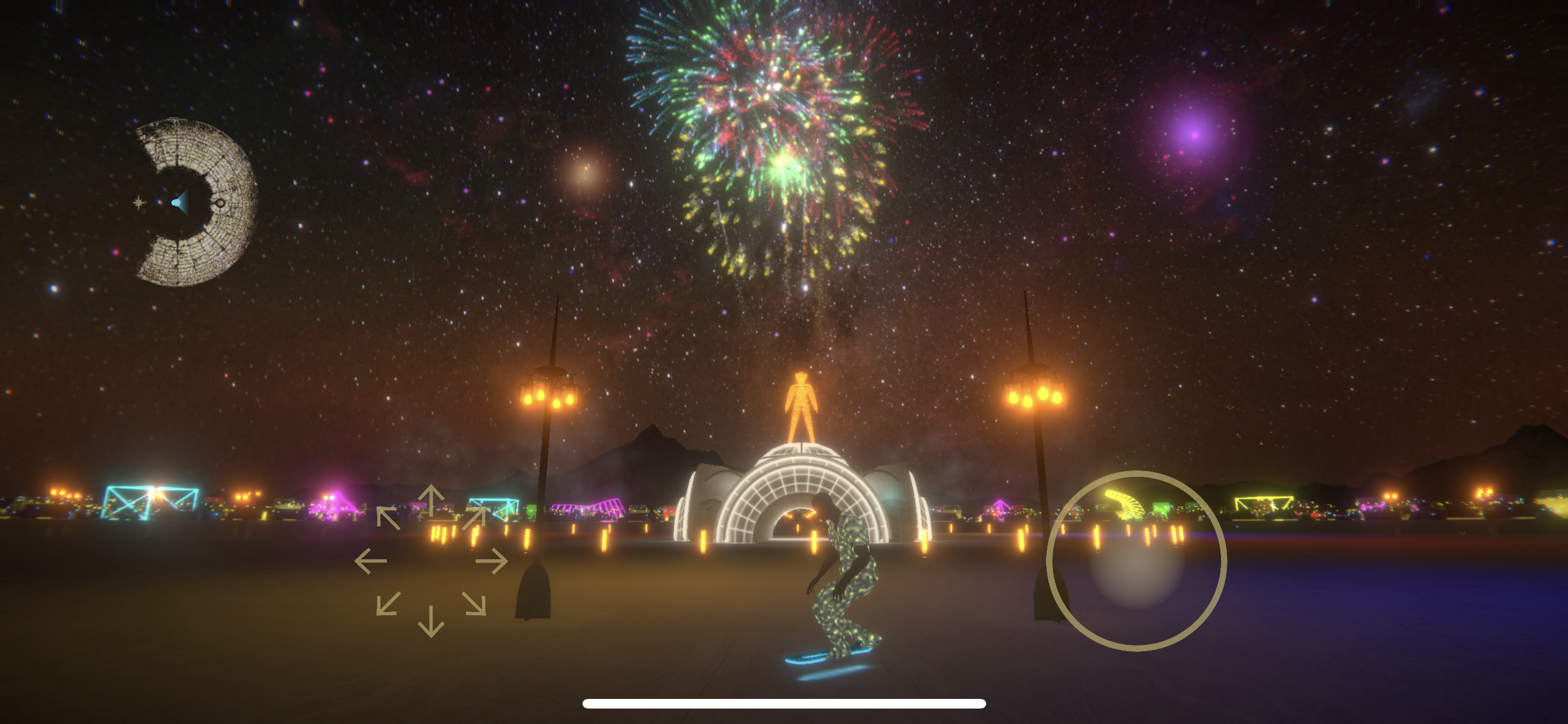
Ghazanfari tells TechCrunch he feels a responsibility in creating the environment that other Burners will experience; he says his chief concern is capturing the event’s complexity. Compared to the other apps, Multiverse focuses primarily on providing a photorealistic 3D playground where avatars can zoom around.
“As Burners, we don’t think of Burning Man as just a music festival or art festival; it is much more than that. Burning Man is a social experiment of creating a community out of a shared struggle,” Ghazanfari says.
Each of the Burning Man-approved apps seem to engage with evoking that shared struggle differently, which appears to be the most looming challenge of moving this event to a virtual format. While the apps hope to bring elements of the physical event into their virtual spaces, the creators also seem to realize that aiming to compete with attendees’ past memories is unwise. It’s a challenge that has been faced by dozens of startups in the virtual reality space over the past several years.
“I think the main challenge is taking something that exists in reality and then porting it into a different platform,” said Adam Arrigo, CEO of Wave, a venture-backed startup that initially launched a VR app for music concerts but has since shifted focus to mobile and desktop experiences. “When you’re in these digital spaces, the agency that you have as a user and the experiences you can create are so different than something that could exist, even at a concert.”
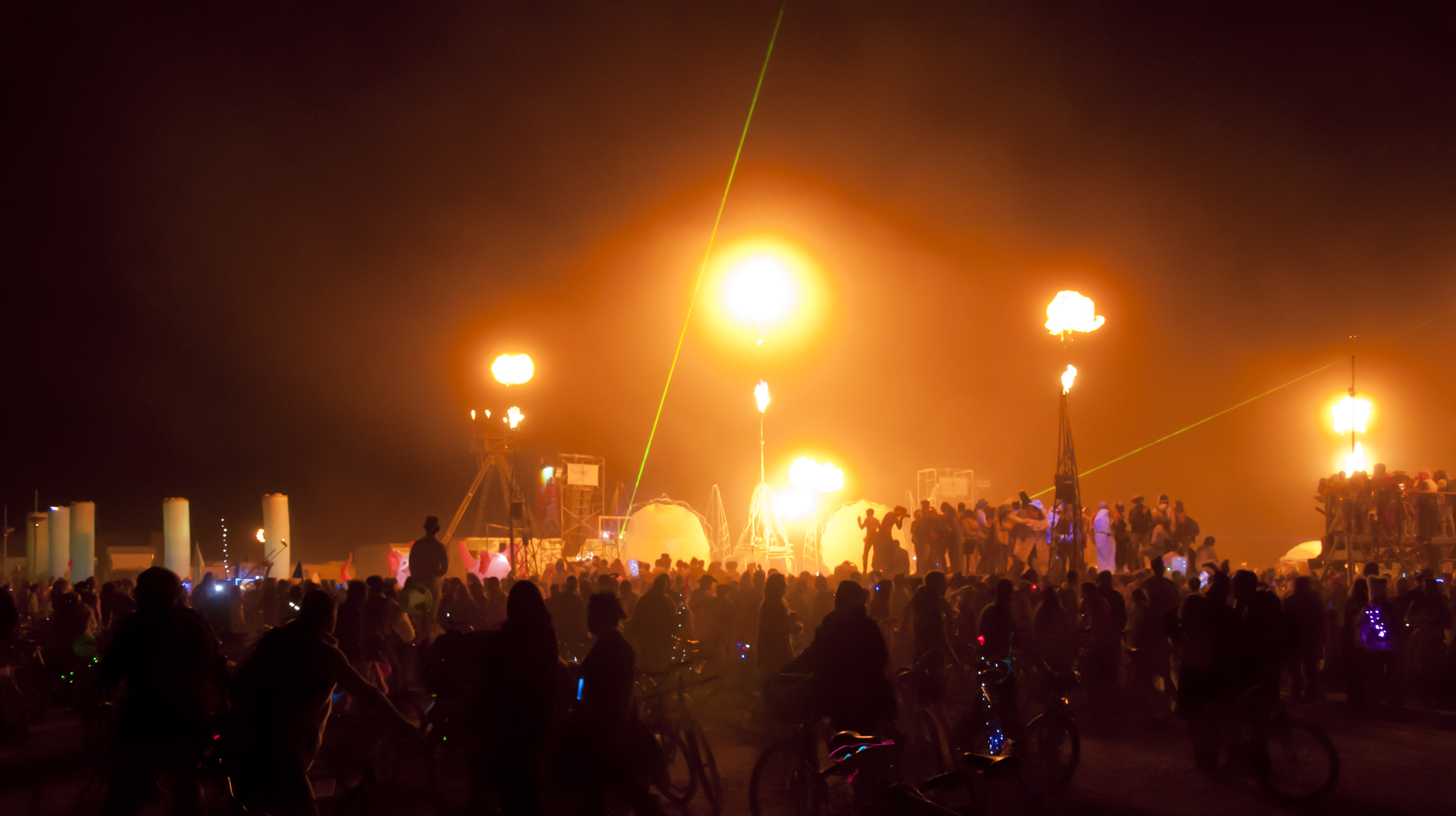
Financial uncertainty
Perhaps the biggest unknown, as the organization readies for Burning Man’s August 30 start date, is that nobody really has any idea how many people are going to show up. While Blumenfeld pointed me to suggestions the entire digital event could attract up to 30,000 people over its nine-day run, Ghazanfari hopes that hundreds of thousands or millions of users will come into the fold of his experience.
Another point of contention internally is how exactly the groups plan to monetize these digital experiences.
In 2020, the standard ticket price for Burning Man was $475. The organization postponed the “main sale” of tickets prior to this year’s physical event’s cancellation, but they had already sold tens of thousands of tickets. Ticket holders will have the option of being refunded, but the organization has encouraged those who “have the means” to consider making a full or partial donation of the ticket price instead.
In 2018, Burning Man cost $44 million for the organization to produce, according to tax documents. The Burning Man Project reported about $43 million in ticket sales from that event, with other donations and revenue streams bringing the nonprofit’s total revenue for that fiscal year to about $46 million. In a blog post, the event’s organizers noted that though the group had event insurance, they were not covered for a cancellation caused by a pandemic. Burning Man Project says it has $10 million in cash reserves, but that it anticipates draining through that funding by the end of the year to stay afloat. The organization is listed as having received a loan from the federal government’s Paycheck Protection Program for between $2-5 million.
While some like Ghazanfari are pushing to make their experiences free to access with the option of giving a donation later, others expressed desire for a single digital ticket that would give attendees access to all eight digital experiences. Cooke says users will need to pay a $50 entrance fee to access the SparkleVerse.
The disparate nature of the experience being built this year — with some being shipped as native apps, others in HTML5 and others inside existing tech platforms — meant that a unified ticketing platform just wouldn’t work, Blumenfeld told TechCrunch. Not all of the developers were thrilled with this outcome, which they fear could fracture attendance at events on certain platforms. The biggest concern seemed to be ensuring that all of this effort pays off in some way for the organization so that they can continue to host the Burning Man event post-pandemic.
“One of the biggest reasons we’re all doing this is to help Burning Man survive, because the Burning Man organization unfortunately was really badly hit because of COVID,” Ghazanfari says. “The organization is in kind of a precarious situation financially.”
The organization has attracted criticism in recent years for the event’s inclusiveness. Some of the developers acknowledge that planning for a nine-day trip to the middle of the desert can be daunting and prohibitively expensive for people that want to join the community, and they hope that this year’s shift to a digital format will open up the event to more people and that these apps can be a less intimidating way for skeptics to get a taste of the community.

Thinking of the future
None of the developers behind the digital experiences are being paid for their efforts building these apps. However, the Burning Man Project has given at least some of them perpetual licenses to continue operating these digital platforms with the Burning Man name and an option to monetize, though a percentage of proceeds will be kicked back to the organization.
While getting this event across the finish line by the end of the month is daunting enough, the Burning Man Project is also trying to consider how its rapid learnings will apply to next year, though they hope that the physical event returns for 2021.
Blumenfeld says he plans to spend the next year working on the background infrastructure so that items like gating and ticketing functions for a virtual Burning Man can all be centralized.
While having eight distinct experiences this year could complicate the goal of getting one big group together, developers concerned about troubleshooting their new apps or having a sudden influx of virtual Burners overwhelm their infrastructures view multiple entry points to the festival as a necessary logistical move. Organizers hope the diversity of options will keep things interesting for attendees.
“I think we’ve got a good mix, and part of it is, we want to learn,” Blumenfeld says. “What we’re trying very hard to avoid is being in Zoom meeting hell.”
Whether users are connecting via video chat or as avatars inside a large virtual world, the developers building Burning Man’s virtual experiences believe they are operating on the cutting edge of virtual interaction and that they are rethinking elements of modern social networking to create a virtual Burning Man where people will be able to form new social bonds.
“I’ve fallen in love with this idea that at some point in the future, some Ph.D. student in 300 years time is going to write a thesis on the first online Burning Man, because it does feel like an extraordinary moment of avant garde imagineering for what the future of human online interaction looks like,” Cooke tells TechCrunch.
Burning Man’s Larry Harvey passes after opening tech’s imagination
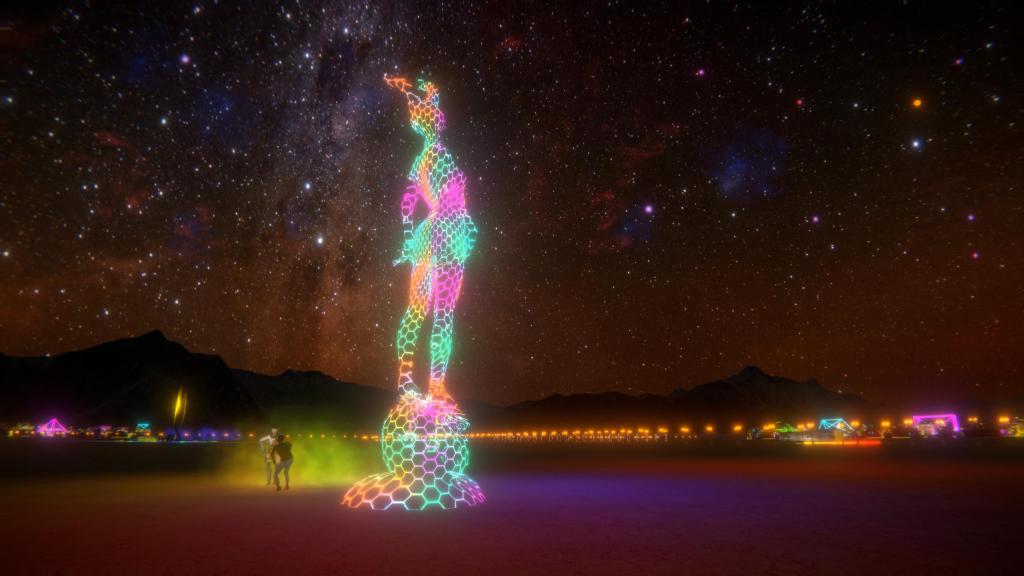






























Comment